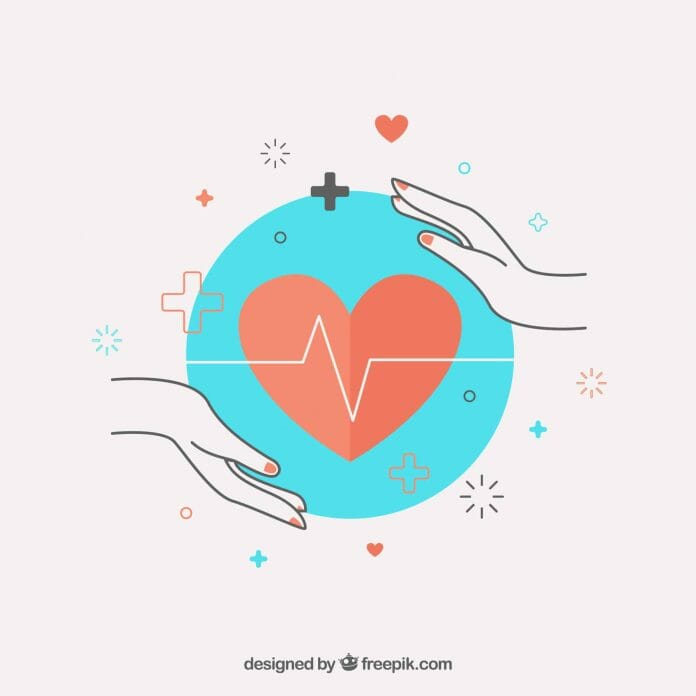IJN’s Heart Attack Centre improves patient outcomes through speedy yet effective treatment
When it comes to heart attacks, the advice appears simple; as soon as you experience the symptoms, get medical attention immediately. However, based on the statistics of heart attack patients at Institut Jantung Negara’s (IJN) Heart Attack Centre, Malaysians on average take up to four hours to seek help after experiencing initial symptoms such as chest pains.
This is alarming as time is of the essence in treating heart attacks. Typically, heart attack sufferers are advised to seek treatment within an hour after symptoms start; undue delays mean that the risk of more heart muscle dying increases. In such cases, damaged heart muscle can lead to congestive heart failure in the long-term.
IJN emergency physician Dr Farina Mohd Salleh says that this delay may be due to patients either feeling unable to drop whatever they’re doing to seek medical help, or minimising the severity of the symptoms they are having.
“We had a patient who first went to a clinic after he felt chest pains. The clinic had performed an electrocardiogram (ECG), which confirmed that he was having a heart attack. However, the patient decided that he needed to go home first to settle his household errands first and only came in to our centre hours later – he collapsed on us within 10 minutes of walking in. Thankfully, we were able to successfully treat him,” she shares.
Another reason heart attack victims tend to delay seeking treatment is the confusing nature of the symptoms themselves. The popular depiction of a heart attack as agonising chest pains is simply one scenario.
Chest pains can manifest as slight tightening, burning gastric pain, a feeling of heavy pressure, or even just a vague feeling of discomfort. Women and the elderly in particular, tend to display atypical symptoms; including shoulder pain or right-sided chest pain.
“My advise is that if you feel anything remotely resembling a heart attack – chest pains, breathing difficulties, gastric pains – you should go to a hospital immediately,” says Dr Farina.
“Any hospital will prioritise these types of pain, and they will perform an ECG immediately. The longer you wait, the more you risk causing permanent damage to your heart.”
Timely life-saving procedures
On its end, the IJN Heart Attack Centre has refined the timeliness of delivering life-saving procedures
for heart attack patients to an art form.
Through efficient coordination between IJN’s Emergency and
Cardiology departments, as well as a collaboration with ambulance providers, the centre provides round-the-clock emergency cardiac services.
Among these is a procedure called primary percutaneous
coronary intervention (also known as primary PCI), which is the current gold standard in the treatment of heart attacks.
Primary PCI is a procedure that utilises cardiac catheterisation to open narrowed or blocked arteries to allow blood flow to the heart. The procedure involves balloon angioplasty or stents, and is performed by a cardiologist.
If performed in time, the procedure has been proven to significantly improve patient outcomes before they seek long-term treatment. According to the guidelines set by the American College of Cardiology and American Heart Association, primary PCI should be performed within 90 minutes of a patient arriving at the hospital.
This time frame, commonly known as “door-to-balloon time” is a key indicator of a patient’s likelihood of survival
as well long-term well-being. In this regard, IJN’s “door-to-balloon time” has seen significant strides in recent years.
In 2019, 95 percent of patients received primary PCI within 90 minutes; on average, a patient typically receives the procedure within 50 minutes.
This is a particularly remarkable feat, considering the emergency department saw 29,000 patients last year alone.
Dr Farina shares that these time intervals were a result of consistent refinements to the centre’s processes and workflow.
“Our priority is delivering effective treatment as quickly as possible,” she explains. “Now, when patient comes in heart attack symptoms, we get an ECG done within 10 minutes
to determine whether the patient is having a heart attack. As soon as this diagnosis is confirmed, the patient will be immediately prepared to receive the primary PCI.”
New technological improvements have helped to reduce the “door-to-balloon time” as well.
In April 2019, IJN initiated a collaboration with First Ambulance Services to provide on-scene ECG for patients with chest pain. Under this partnership, patients who utilise the ambulance service will immediately have an ECG done by trained paramedics.
The ECG results are then e-mailed to the doctors at IJN’s emergency department. This way, the center can diagnose a heart attack and make the necessary preparations even before the patient arrives at their doorstep.
Collaborating for better outcomes
The results of these improvements can be readily seen in IJN’s mortality rate of heart attacks. The mortality rate reduced from 15.8 percent in 2009 to just 3 percent in 2019.
In contrast, the overall Malaysian data for in-hospital mortality rate of heart attacks stands at 10.6 percent. An enduring testament to IJN’s commitment to emergency cardiac care has been its collaboration with Hospital Kuala Lumpur, which drastically reduced the waiting times of patients suffering heart attacks.
Initiated in 2014, the collaboration, called the HKL-IJN STEMI (ST Elevation Myocardial Infarction) Network or HISNET, enabled HKL to send patients with heart attacks directly to IJN with a single phone call activation system to IJN’s Emergency Department.
“HKL’s emergency physicians will make the initial diagnosis of the patient with an ECG in their emergency department,” explains Dr Farina.
“Once a heart attack is confirmed, they will inform our
emergency department through our dedicated hotline and we will alert the relevant medical staff and prepare the catheterisation laboratory.
So by the time the patient arrives at our emergency room from HKL, we are already ready to perform primary PCI.”
Prior to HISNET, heart attack patients at HKL would be sent to the government-designated heart hospital in Serdang, which is around 30 to 40 minutes away, for Primary PCI.
“Aside from improving the wait times for patients, this collaboration also helped us improve the speed and efficiency of our own processes,” adds Dr Farina.
HISNET also sparked the establishment of the MySTEMI Network, where PCI-capable centres are linked to other hospitals with the aim of providing PCI services in a timely manner.
While such networks are common in developed countries, this was the first time Malaysia has embarked on such a project. At present, IJN is the only private hospital taking part in the network, as it offers 24-hour specialised
cardiac services.
Building upon these successes, the IJN Heart Attack Centre is now working towards being a level one cardiac emergency centre – the highest level of quality globally.
The hospital also recently achieved their fourth cycle of Joint Commission International (JCI) accreditation in 2019. “We are very close to achieving this,” says Dr Farina.
“But more importantly, we are focused on reducing patients’ waiting times and our ‘door-to-balloon time’ even further for better patient outcomes. In the emergency department setting, every minute counts in saving lives.”










